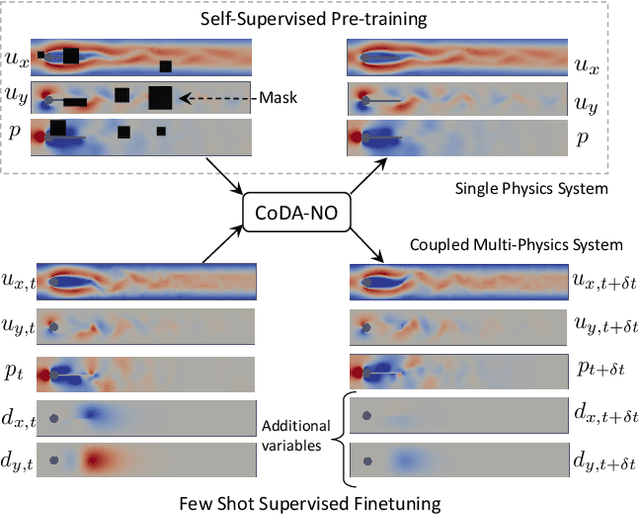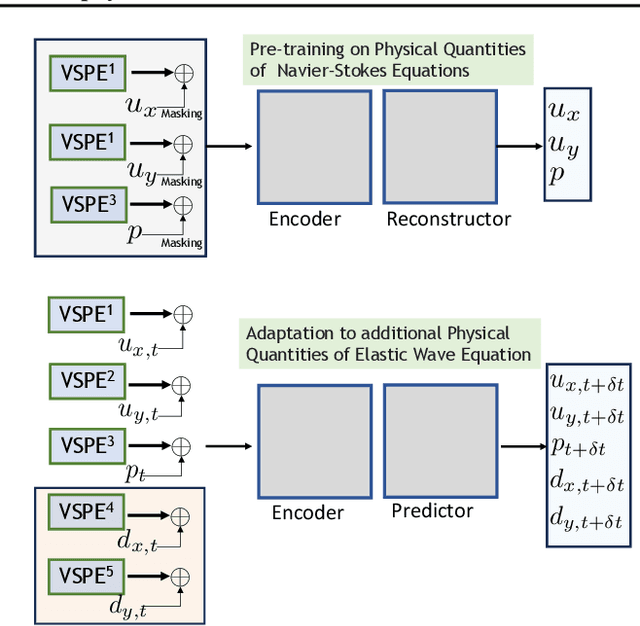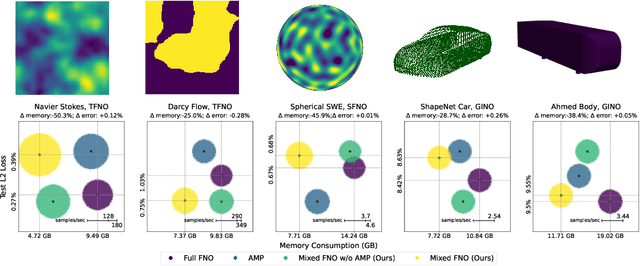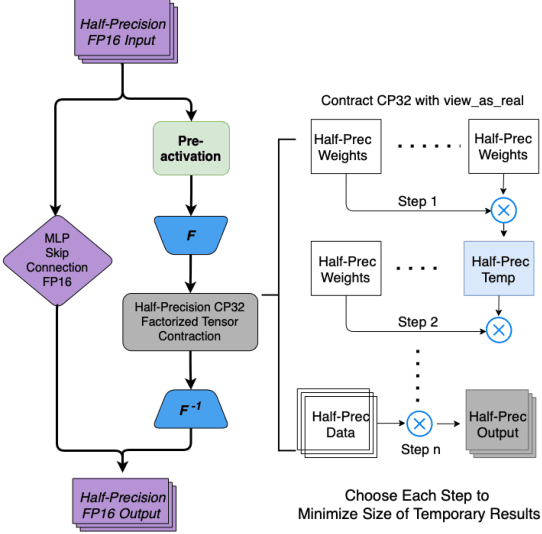Colin White
Michael Pokorny
DSR-Bench: Evaluating the Structural Reasoning Abilities of LLMs via Data Structures
May 29, 2025Abstract:Large language models (LLMs) are increasingly deployed for real-world tasks that fundamentally involve data manipulation. A core requirement across these tasks is the ability to perform structural reasoning--that is, to understand and reason about data relationships. For example, customer requests require a temporal ordering, which can be represented by data structures such as queues. However, existing benchmarks primarily focus on high-level, application-driven evaluations without isolating this fundamental capability. To address this gap, we introduce DSR-Bench, a novel benchmark evaluating LLMs' structural reasoning capabilities through data structures, which provide interpretable representations of data relationships. DSR-Bench includes 20 data structures, 35 operations, and 4,140 problem instances, organized hierarchically for fine-grained analysis of reasoning limitations. Our evaluation pipeline is fully automated and deterministic, eliminating subjective human or model-based judgments. Its synthetic nature also ensures scalability and minimizes data contamination risks. We benchmark nine state-of-the-art LLMs. Our analysis shows that instruction-tuned models struggle with basic multi-attribute and multi-hop reasoning. Furthermore, while reasoning-oriented models perform better, they remain fragile on complex and hybrid structures, with the best model achieving an average score of only 47% on the challenge subset. Crucially, models often perform poorly on multi-dimensional data and natural language task descriptions, highlighting a critical gap for real-world deployment.
Transformers Boost the Performance of Decision Trees on Tabular Data across Sample Sizes
Feb 06, 2025Abstract:Large language models (LLMs) perform remarkably well on tabular datasets in zero- and few-shot settings, since they can extract meaning from natural language column headers that describe features and labels. Similarly, TabPFN, a recent non-LLM transformer pretrained on numerous tables for in-context learning, has demonstrated excellent performance for dataset sizes up to a thousand samples. In contrast, gradient-boosted decision trees (GBDTs) are typically trained from scratch on each dataset without benefiting from pretraining data and must learn the relationships between columns from their entries alone since they lack natural language understanding. LLMs and TabPFN excel on small tabular datasets where a strong prior is essential, yet they are not competitive with GBDTs on medium or large datasets, since their context lengths are limited. In this paper, we propose a simple and lightweight approach for fusing large language models and TabPFN with gradient-boosted decision trees, which allows scalable GBDTs to benefit from the natural language capabilities and pretraining of transformers. We name our fusion methods LLM-Boost and PFN-Boost, respectively. While matching or surpassing the performance of the transformer at sufficiently small dataset sizes and GBDTs at sufficiently large sizes, LLM-Boost and PFN-Boost outperform both standalone components on a wide range of dataset sizes in between. We demonstrate state-of-the-art performance against numerous baselines and ensembling algorithms. We find that PFN-Boost achieves the best average performance among all methods we test for all but very small dataset sizes. We release our code at http://github.com/MayukaJ/LLM-Boost .
Humanity's Last Exam
Jan 24, 2025Abstract:Benchmarks are important tools for tracking the rapid advancements in large language model (LLM) capabilities. However, benchmarks are not keeping pace in difficulty: LLMs now achieve over 90\% accuracy on popular benchmarks like MMLU, limiting informed measurement of state-of-the-art LLM capabilities. In response, we introduce Humanity's Last Exam (HLE), a multi-modal benchmark at the frontier of human knowledge, designed to be the final closed-ended academic benchmark of its kind with broad subject coverage. HLE consists of 3,000 questions across dozens of subjects, including mathematics, humanities, and the natural sciences. HLE is developed globally by subject-matter experts and consists of multiple-choice and short-answer questions suitable for automated grading. Each question has a known solution that is unambiguous and easily verifiable, but cannot be quickly answered via internet retrieval. State-of-the-art LLMs demonstrate low accuracy and calibration on HLE, highlighting a significant gap between current LLM capabilities and the expert human frontier on closed-ended academic questions. To inform research and policymaking upon a clear understanding of model capabilities, we publicly release HLE at https://lastexam.ai.
LiveBench: A Challenging, Contamination-Free LLM Benchmark
Jun 27, 2024



Abstract:Test set contamination, wherein test data from a benchmark ends up in a newer model's training set, is a well-documented obstacle for fair LLM evaluation and can quickly render benchmarks obsolete. To mitigate this, many recent benchmarks crowdsource new prompts and evaluations from human or LLM judges; however, these can introduce significant biases, and break down when scoring hard questions. In this work, we introduce a new benchmark for LLMs designed to be immune to both test set contamination and the pitfalls of LLM judging and human crowdsourcing. We release LiveBench, the first benchmark that (1) contains frequently-updated questions from recent information sources, (2) scores answers automatically according to objective ground-truth values, and (3) contains a wide variety of challenging tasks, spanning math, coding, reasoning, language, instruction following, and data analysis. To achieve this, LiveBench contains questions that are based on recently-released math competitions, arXiv papers, news articles, and datasets, and it contains harder, contamination-free versions of tasks from previous benchmarks such as Big-Bench Hard, AMPS, and IFEval. We evaluate many prominent closed-source models, as well as dozens of open-source models ranging from 0.5B to 110B in size. LiveBench is difficult, with top models achieving below 65% accuracy. We release all questions, code, and model answers. Questions will be added and updated on a monthly basis, and we will release new tasks and harder versions of tasks over time so that LiveBench can distinguish between the capabilities of LLMs as they improve in the future. We welcome community engagement and collaboration for expanding the benchmark tasks and models.
Pretraining Codomain Attention Neural Operators for Solving Multiphysics PDEs
Mar 19, 2024



Abstract:Existing neural operator architectures face challenges when solving multiphysics problems with coupled partial differential equations (PDEs), due to complex geometries, interactions between physical variables, and the lack of large amounts of high-resolution training data. To address these issues, we propose Codomain Attention Neural Operator (CoDA-NO), which tokenizes functions along the codomain or channel space, enabling self-supervised learning or pretraining of multiple PDE systems. Specifically, we extend positional encoding, self-attention, and normalization layers to the function space. CoDA-NO can learn representations of different PDE systems with a single model. We evaluate CoDA-NO's potential as a backbone for learning multiphysics PDEs over multiple systems by considering few-shot learning settings. On complex downstream tasks with limited data, such as fluid flow simulations and fluid-structure interactions, we found CoDA-NO to outperform existing methods on the few-shot learning task by over $36\%$. The code is available at https://github.com/ashiq24/CoDA-NO.
Smaug: Fixing Failure Modes of Preference Optimisation with DPO-Positive
Feb 20, 2024



Abstract:Direct Preference Optimisation (DPO) is effective at significantly improving the performance of large language models (LLMs) on downstream tasks such as reasoning, summarisation, and alignment. Using pairs of preferred and dispreferred data, DPO models the \textit{relative} probability of picking one response over another. In this work, first we show theoretically that the standard DPO loss can lead to a \textit{reduction} of the model's likelihood of the preferred examples, as long as the relative probability between the preferred and dispreferred classes increases. We then show empirically that this phenomenon occurs when fine-tuning LLMs on common datasets, especially datasets in which the edit distance between pairs of completions is low. Using these insights, we design DPO-Positive (DPOP), a new loss function and training procedure which avoids this failure mode. Surprisingly, we also find that DPOP significantly outperforms DPO across a wide variety of datasets and downstream tasks, including datasets with high edit distances between completions. By fine-tuning with DPOP, we create and release Smaug-34B and Smaug-72B, which achieve state-of-the-art open-source performance. Notably, Smaug-72B is nearly 2\% better than any other open-source model on the HuggingFace Open LLM Leaderboard and becomes the first open-source LLM to surpass an average accuracy of 80\%.
TuneTables: Context Optimization for Scalable Prior-Data Fitted Networks
Feb 17, 2024



Abstract:While tabular classification has traditionally relied on from-scratch training, a recent breakthrough called prior-data fitted networks (PFNs) challenges this approach. Similar to large language models, PFNs make use of pretraining and in-context learning to achieve strong performance on new tasks in a single forward pass. However, current PFNs have limitations that prohibit their widespread adoption. Notably, TabPFN achieves very strong performance on small tabular datasets but is not designed to make predictions for datasets of size larger than 1000. In this work, we overcome these limitations and substantially improve the performance of PFNs by developing context optimization techniques for PFNs. Specifically, we propose TuneTables, a novel prompt-tuning strategy that compresses large datasets into a smaller learned context. TuneTables scales TabPFN to be competitive with state-of-the-art tabular classification methods on larger datasets, while having a substantially lower inference time than TabPFN. Furthermore, we show that TuneTables can be used as an interpretability tool and can even be used to mitigate biases by optimizing a fairness objective.
ForecastPFN: Synthetically-Trained Zero-Shot Forecasting
Nov 03, 2023



Abstract:The vast majority of time-series forecasting approaches require a substantial training dataset. However, many real-life forecasting applications have very little initial observations, sometimes just 40 or fewer. Thus, the applicability of most forecasting methods is restricted in data-sparse commercial applications. While there is recent work in the setting of very limited initial data (so-called `zero-shot' forecasting), its performance is inconsistent depending on the data used for pretraining. In this work, we take a different approach and devise ForecastPFN, the first zero-shot forecasting model trained purely on a novel synthetic data distribution. ForecastPFN is a prior-data fitted network, trained to approximate Bayesian inference, which can make predictions on a new time series dataset in a single forward pass. Through extensive experiments, we show that zero-shot predictions made by ForecastPFN are more accurate and faster compared to state-of-the-art forecasting methods, even when the other methods are allowed to train on hundreds of additional in-distribution data points.
Data Contamination Through the Lens of Time
Oct 16, 2023Abstract:Recent claims about the impressive abilities of large language models (LLMs) are often supported by evaluating publicly available benchmarks. Since LLMs train on wide swaths of the internet, this practice raises concerns of data contamination, i.e., evaluating on examples that are explicitly or implicitly included in the training data. Data contamination remains notoriously challenging to measure and mitigate, even with partial attempts like controlled experimentation of training data, canary strings, or embedding similarities. In this work, we conduct the first thorough longitudinal analysis of data contamination in LLMs by using the natural experiment of training cutoffs in GPT models to look at benchmarks released over time. Specifically, we consider two code/mathematical problem-solving datasets, Codeforces and Project Euler, and find statistically significant trends among LLM pass rate vs. GitHub popularity and release date that provide strong evidence of contamination. By open-sourcing our dataset, raw results, and evaluation framework, our work paves the way for rigorous analyses of data contamination in modern models. We conclude with a discussion of best practices and future steps for publicly releasing benchmarks in the age of LLMs that train on webscale data.
Speeding up Fourier Neural Operators via Mixed Precision
Jul 27, 2023



Abstract:The Fourier neural operator (FNO) is a powerful technique for learning surrogate maps for partial differential equation (PDE) solution operators. For many real-world applications, which often require high-resolution data points, training time and memory usage are significant bottlenecks. While there are mixed-precision training techniques for standard neural networks, those work for real-valued datatypes on finite dimensions and therefore cannot be directly applied to FNO, which crucially operates in the (complex-valued) Fourier domain and in function spaces. On the other hand, since the Fourier transform is already an approximation (due to discretization error), we do not need to perform the operation at full precision. In this work, we (i) profile memory and runtime for FNO with full and mixed-precision training, (ii) conduct a study on the numerical stability of mixed-precision training of FNO, and (iii) devise a training routine which substantially decreases training time and memory usage (up to 34%), with little or no reduction in accuracy, on the Navier-Stokes and Darcy flow equations. Combined with the recently proposed tensorized FNO (Kossaifi et al., 2023), the resulting model has far better performance while also being significantly faster than the original FNO.
 Add to Chrome
Add to Chrome Add to Firefox
Add to Firefox Add to Edge
Add to Edge